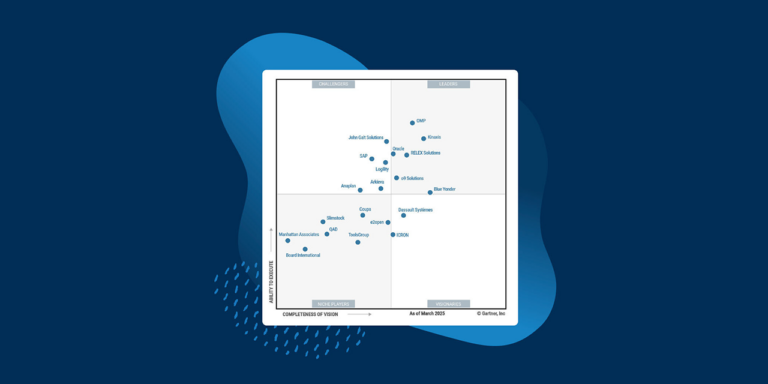Chain drug retailers can overcome silos with ‘one truth’
Sep 2, 2021 • 5 min
This piece originally appeared in Chain Drug Review.
It wasn’t that long ago that “retail” referred to a local store run by one person who understood every aspect of the business and managed everything by hand. Yet, retailers in general and drug retailers specifically, have seen rapid and explosive growth, both geographically and in the complexity of their product offerings and services. Multinational businesses now oversee hundreds of stores that offer thousands of products, with more locations and more products being added almost daily.
To keep up with this growth, drug retailers have had to rethink their business practices. One person (or even one small, centralized team) was no longer enough to manage all areas of an increasingly complex business model. Instead, retailers developed specialized teams to address the expanding workload.
As the pace of change has quickened dramatically, these teams have become more focused, more specialized—and more siloed.
For most of today’s large drug retailers, separate teams now control curating assortments and determining product offerings, setting pricing and promotion strategies, overseeing the flow of goods in the supply chain, managing the space and ensuring that the right workforce is on hand at all times. As the pace of change has quickened dramatically, these teams have become more focused, more specialized—and more siloed. These silos were further reinforced by the development of software and tools that support each team’s specialization but not the interaction between those teams.
Currently, some teams plan with spreadsheets—a process that most agree is cumbersome and time-consuming—while others take advantage of software that is isolated from the rest of the business or integrated poorly with other systems. Each team does their best to make choices that allow them to meet their KPIs in alignment with other teams, but it isn’t easy to review the broader impact of those choices.
In a slow-moving world, where this month’s business patterns are the same as last year’s or last week’s, silos can be mitigated with collaborative cross-team meetings. With changes in retail happening almost daily, an optimal decision made last month will be suboptimal this month, and teams no longer have time to wait for a meeting to move things forward. However, a complete lack of visibility and collaboration between teams leads to mismanaged processes, errors and the pain points familiar to so many retailers: missed sales, reduced margins, increased costs and higher inventories.
A poor flow of information between teams leads to frustration, conflict, inconsistencies across stores, and missed opportunities for improvement.
Silos also exacerbate issues that affect teams on a day-to-day basis. A poor flow of information between teams leads to frustration, conflict, inconsistencies across stores, and missed opportunities for improvement. KPIs become challenging to meet, leading to bottlenecks, missed deadlines and overstocks or stockouts. And when teams must stop their work to resolve issues as they arise, significant time is wasted that could instead be used to improve processes, increase productivity and benefit the bottom line.
To overcome the challenges that silos bring, drug retailers must implement a unified approach to retail planning that allows all teams to work from “one truth”—a single source of data. Solutions that provide a high level of visibility break down silos between teams, making the impact of their decisions evident throughout the organization. This not only allows teams to continue doing their specialized, focused work—it improves the outcomes.
By establishing a solid data foundation, unified planning supports each team’s decisions while aligning them with other teams’ needs and the business’s overall goals.
By establishing a solid data foundation, unified planning supports each team’s decisions while aligning them with other teams’ needs and the business’s overall goals. Unified planning optimizes costs, margins and sales across the entirety of the business, and also helps planners recognize how each part of the business—from inventory management to space and workforce management—influences the way each other part operates.
To illustrate how unified planning allows specialized teams to improve both their outcomes and the company’s overall goals, let’s consider how promotions, which typically require the involvement of multiple teams, are managed in drug retailing:
- The merchandising team plans new promotions and associated displays using their own promotion-planning software. While these plans may be based partly on past demand patterns, they often do not take into account supply chain forecasts or associated factors that could influence inventory allocation, such as a location’s demand patterns or anticipated reactivity to the promotion. Instead, the merchandising team will develop a one-size-fits-all promotional plan for all locations, resulting in a display that does well at some stores (leading to overstock) and overperforms in others (leading to out-of-stocks).
- The supply chain and inventory teams have to make decisions on whose version of the promotional demand forecast they will use for ordering—the merchandiser’s or their own. As a result, the inventory team may make allocation decisions based on a different, more granular, forecast. If they go by the merchant’s plan and fill all of the displays, they may have months of inventory in some stores, affecting their turns. If they don’t fill the shelves, consumers may be turned off by out-of-stocks. In addition, it also causes conflict with the merchandising team, which only knows that they aren’t meeting their goals without having access to the data driving the decisions or being able to make adjustments.
- The workforce management team is unlikely to be aware of upcoming promotions and will create schedules for the promotion period that don’t take into account the inevitable increase in workload. High-traffic stores will not have enough staff to adequately take care of essential, time-sensitive tasks like unloading promotional inventory and replenishing displays, which leads to lost sales and a negative impact on the inventory and merchandising teams’ goals.
With a unified planning strategy, all three teams can base their plans on a single source of data, allowing each team to immediately see the impact of their decisions on other parts of the business. This means the promotion is more likely to succeed if:
- The merchandising team reviews store-specific factors relating to the current promotion, including projected inventory levels, allowing them to identify if the inventory value is too high to need a large display in certain stores. With this knowledge, they can proactively adapt their display plan to each location’s needs, relieving some of the inventory team’s burden.
- The inventory team incorporates promotional data that is updated by the merchandising team into their forecasts, allowing them to place more accurate allocations by store location. This process leads to appropriately stocked displays, with inventory prioritized for stores where it will sell best. Additionally, both the merchandising and inventory teams will have access to accurate information about how the promotion performed after it is complete, which will then be used to influence future planning.
- The workforce team is notified automatically about promotions, allowing them to make scheduling adjustments by location, anticipating workload needs throughout the promotional period. This can lead to more efficient store operations overall, increased sales (due to better replenishment), and improved inventory management.
There are significant results at retailers that unify different aspects of their business in this manner. In one example, one retailer that unified its forecasting, replenishment and space planning saw a higher level of trust in centrally created planograms, increased compliance and improved sales. Another used demand forecasts to optimize its workforce planning and reduced personnel costs between 6-8%.
In today’s highly competitive, rapidly changing retail environment, a company’s survival depends on its ability to innovate and adapt quickly. Specialized teams need to plan and pivot. Pausing to put out individual fires as they arise is inefficient at best. Silos must be broken down and visibility between teams improved. Drug retailers need to embrace a unified strategy that provides a single source of actionable data that is accessible by all teams. This will lead to a better flow of information and more streamlined decision making that will help each team to meet their KPIs while they support other teams in meeting their goals.



